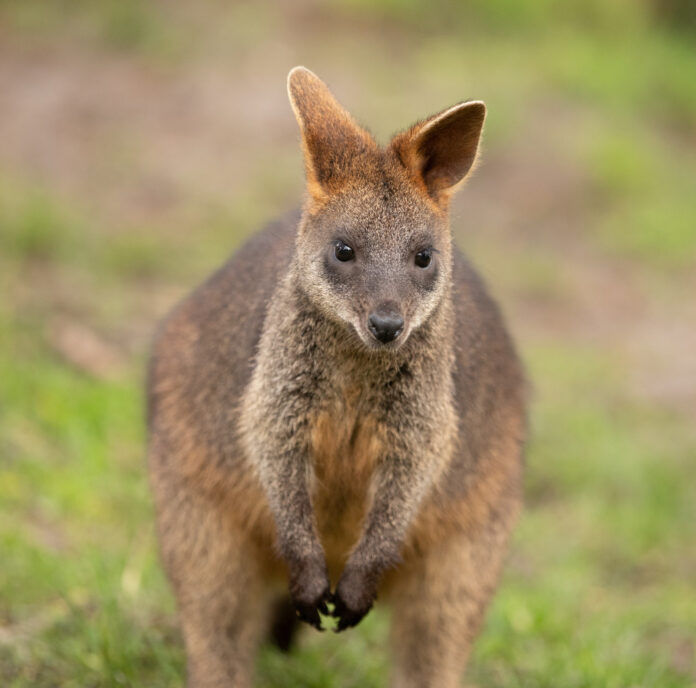Residents in Calverton report seeing an Australian wallaby on the loose, prompting calls to contact the National Biodiversity Network
In a curious turn of events, a wallaby has been spotted roaming free in Nottinghamshire. The marsupial, native to Australia and New Guinea, was sighted by several locals in and around the village of Calverton last week.
Ben Thompson, a local resident, first noticed the wallaby while driving home from work. He initially mistook the animal for a deer or badger due to its distance. However, as he got closer, it became clear that he was looking at a wallaby. Eager to document the unusual sighting, Thompson took several photos and shared them on social media, noting the improbability of his encounter.
Embed from Getty Images“It was quite a distance away at first, and I doubted what I was seeing. I thought it might be a muntjac deer or even a badger, as we have quite a few of those around here. But as I approached, it was obvious it was a little wallaby. I took some pictures because I knew people wouldn’t believe this otherwise,” Thompson said.
The Nottinghamshire Wildlife Trust has urged residents to report any sightings of wallabies to the National Biodiversity Network. Erin McDaid from the Trust explained that while it is unusual to see such animals in the wild in the UK, there have been occasional reports of marsupials escaping from zoos or private collections over the years.
“This isn’t the first time we’ve had unusual sightings in the area. If there were a number of such animals on the loose, it could be a concern. We ask anyone who spots a wallaby to contact us with clear photographs. This helps us verify the sightings, as misidentifications can occur,” McDaid said.
He added that while wallabies are not native to the UK, they have been part of private collections and zoos for over a century. Despite their non-native status, their occasional appearance in the countryside has been documented.
The Trust is working to ensure that the wallaby is safely managed. Residents who encounter the animal are advised to report their sightings to help track its movements and ensure it is returned to a safe environment.
Analysis:
Political: The sighting of a wallaby could indirectly influence local wildlife and animal welfare policies. If the presence of non-native species becomes more common, it may prompt local authorities to review regulations concerning exotic pets and their containment. This could lead to tighter controls on private animal ownership and more robust measures for dealing with escaped animals.
Social: Socially, the wallaby sighting has sparked interest and amusement among residents and social media users. Such unusual events often capture public imagination, leading to increased engagement with local news and wildlife issues. The humorous and surprising nature of the sighting can foster community interaction and awareness about wildlife.
Racial: The racial impact of this event is minimal, as it primarily concerns a non-native species and local wildlife management. However, the broader implications of exotic animals appearing in non-native environments could indirectly affect communities, especially if issues of animal welfare and containment are debated.
Gender: Gender-specific responses are unlikely to be significant in this context. However, the wallaby sighting might engage diverse groups equally, as such events typically transcend gender and attract a wide audience due to their novelty and the element of surprise.
Economic: Economically, the sighting of a wallaby could have minor implications for local wildlife management budgets. If more instances of exotic animals escaping or being released occur, it could lead to increased costs for monitoring and managing these animals. Additionally, such incidents might affect local tourism if they are marketed as unique attractions.
